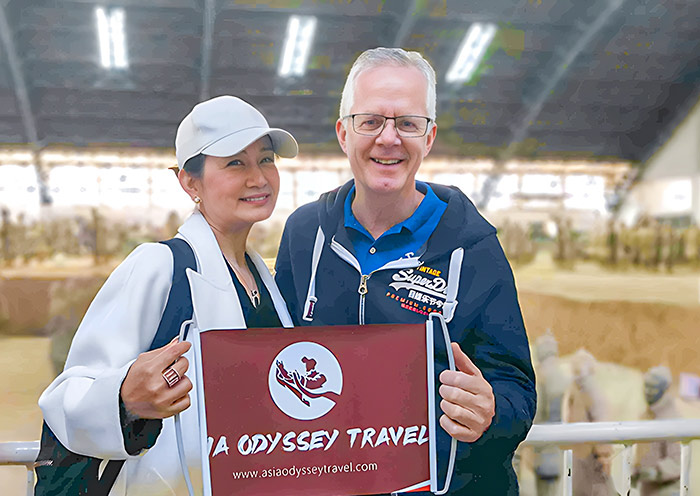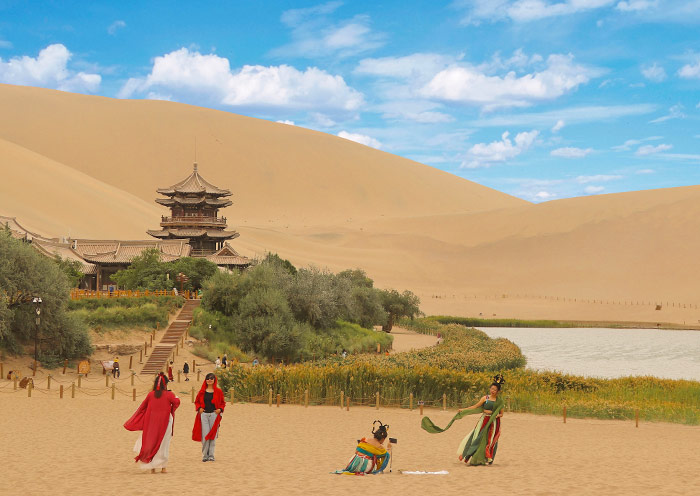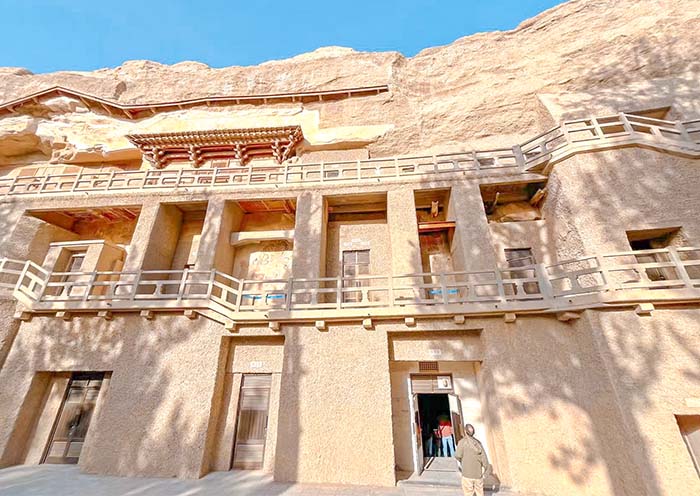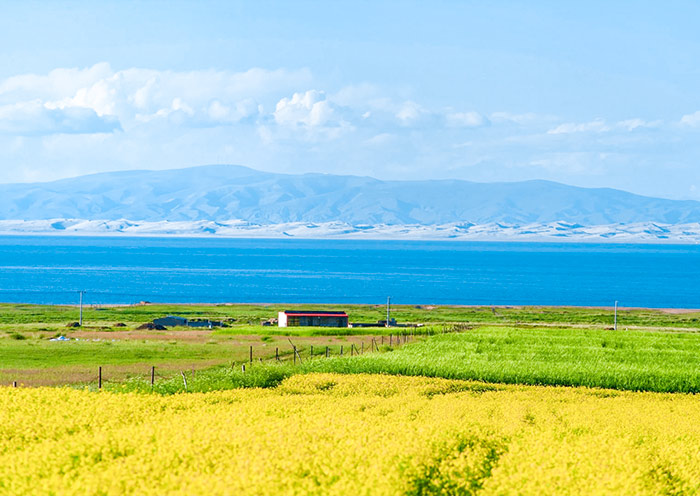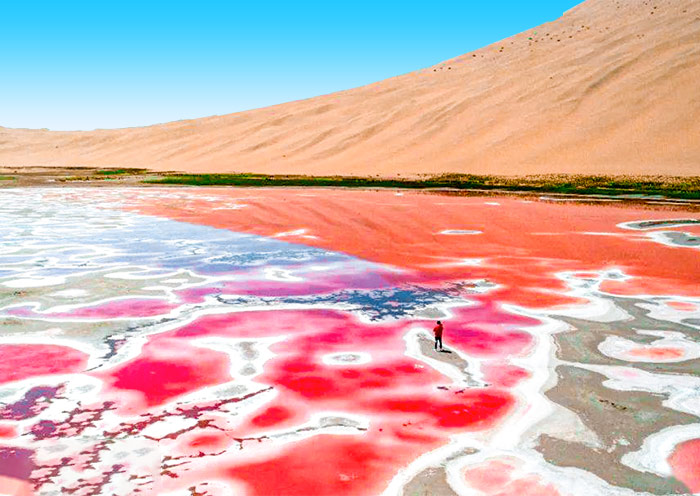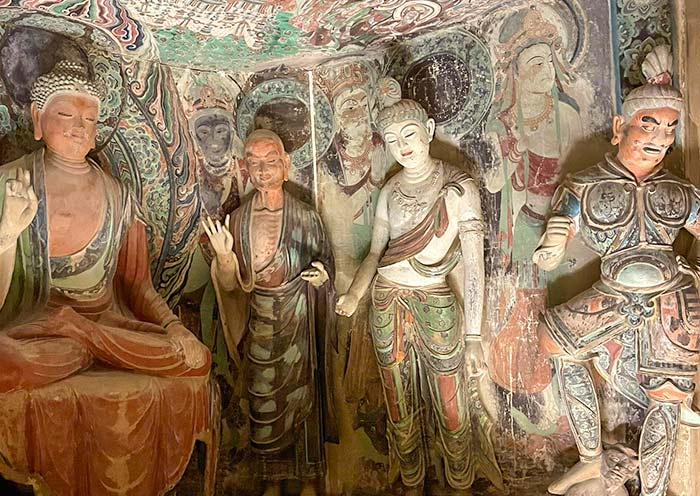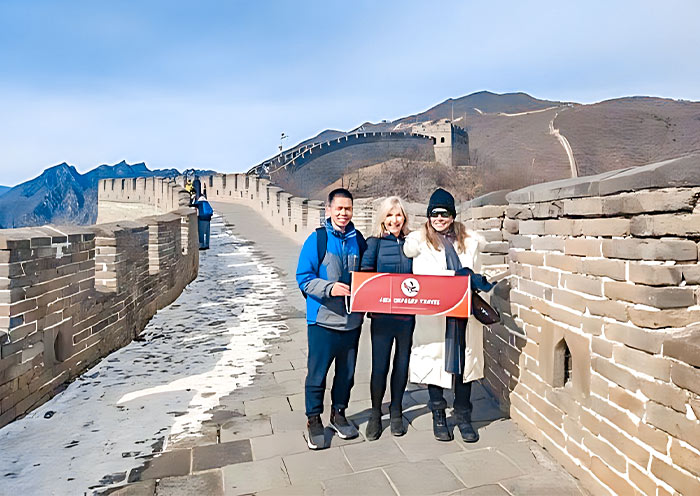10 Days Classic China Silk Road Tour: Xian, Mogao Caves & Kashgar Old City
- Highlights
- Itinerary
- Price
- Trip Notes
- Accommodation
- Photos
- Reviews
The Most Classic Ancient Silk Road Trip from Starting Point - Xian
Now, follow us on a journey through time and ancient cities along the legendary China Silk Road, from its starting point in Xian to the final destination of Kashgar in Xinjiang Province. This long route, rich with fascinating cultural legacies, UNESCO heritage sites, and stunning natural wonders, will take you back to a world where East met West. You’ll walk in the footsteps of traders and explorers who shaped global history.
In 10 days the MOST CLASSIC Silk Road tour, start your adventure in Xian (Chang’an), the Silk Road’s starting point, home to the Terracotta Warriors and the well-preserved Ancient City Wall. Continue to Dunhuang, famous for the Mogao Caves, a treasure trove of Buddhist art, and the breathtaking Mingshan Mountain and Crescent Lake. In Turpan, explore the Jiaohe Ancient City, the Flaming Mountains, and the Karez irrigation system. Discover the beauty of Heavenly Lake in Urumqi, surrounded by snow-capped mountains. Finally, arrive in Kashgar, the Silk Road’s end point, where you’ll visit the historic Old City, the grand Id Kah Mosque, and take in the majestic Pamir Plateau.
This 10-day Silk Road tour is the perfect blend of history, culture, and natural beauty - an unforgettable journey through time!
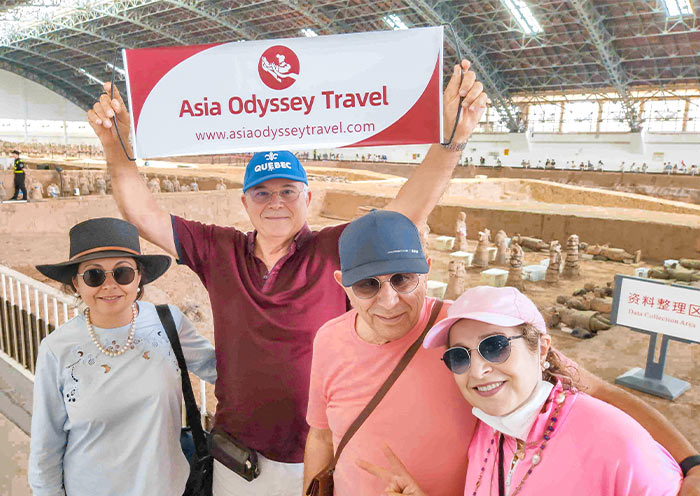

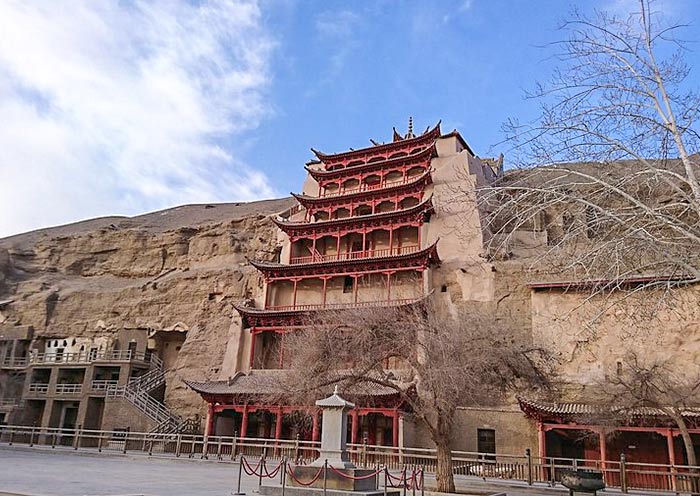
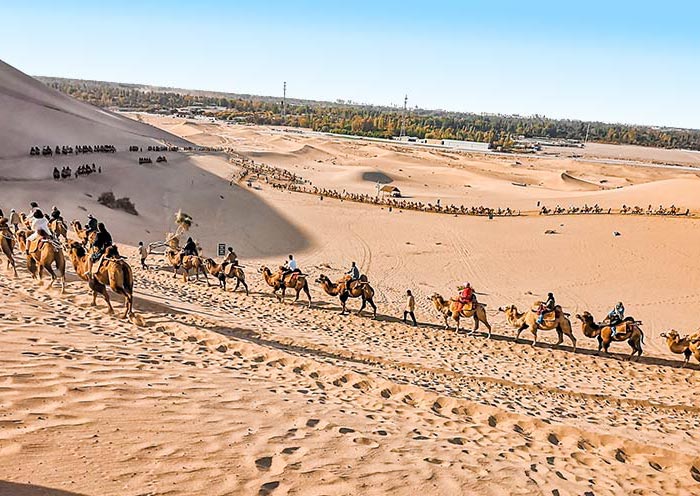
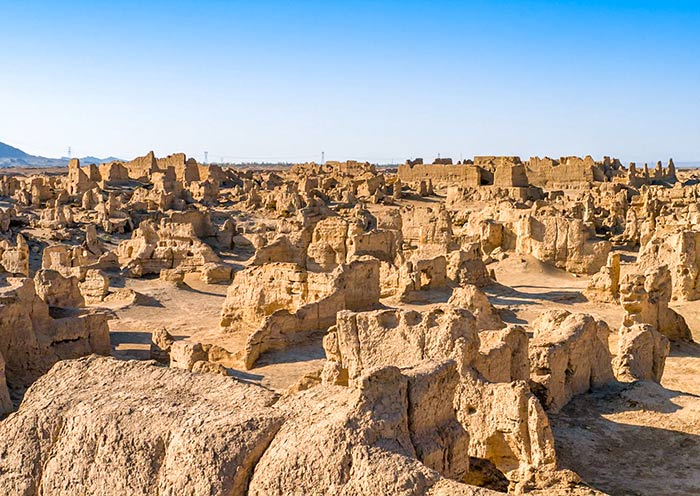
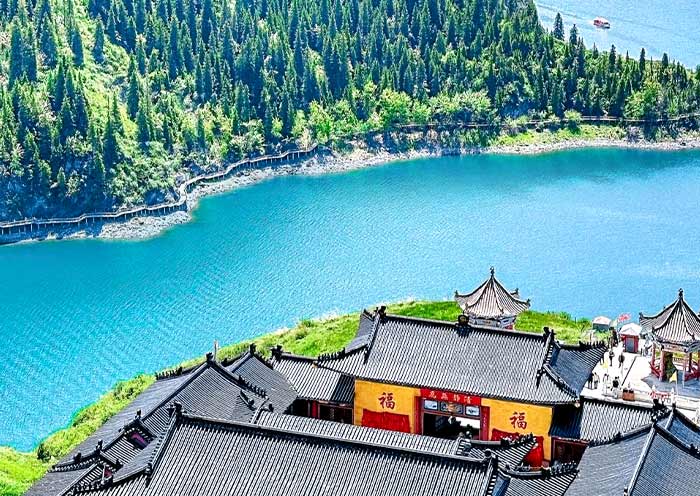
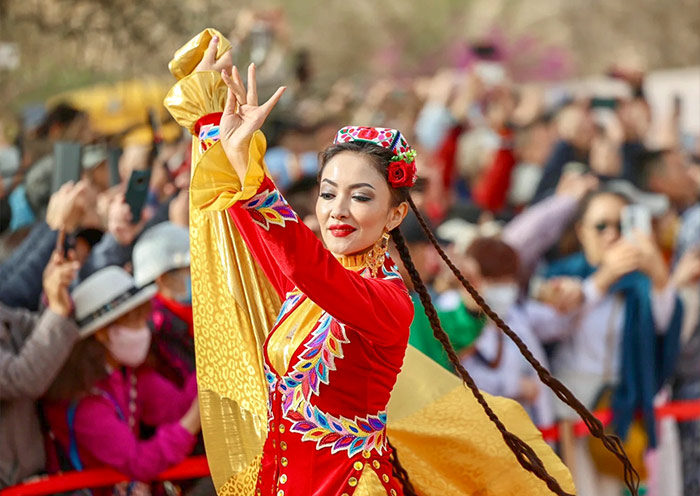

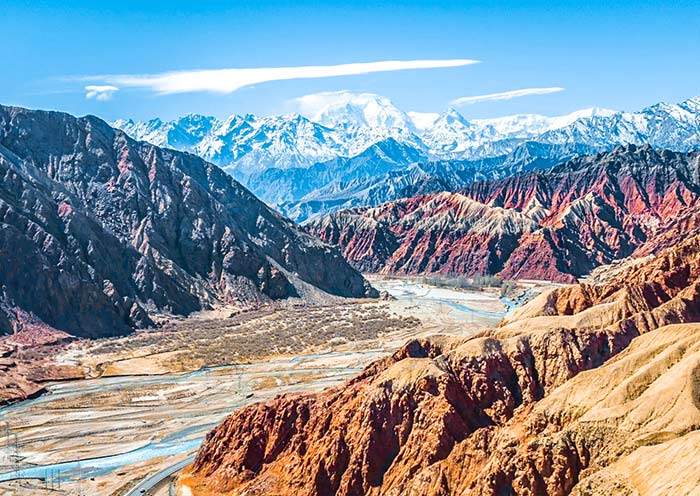
Itinerary at a Glance
Xian (3 Days)
Terracotta Warriors, Ancient City Wall, Bell & Drum Tower, Muslim Quarter, Xian Museum, Ancient City Wall, Giant Wild Goose Pagoda, Hanfu Experience, Grand Tang Dynasty Ever Bright City
Dunhuang (1.5 Days)
Mogao Grottoes (World Heritage), Singing Sand Dunes & Crescent Spring
Turpan (1.5 Days)
Jiaohe Ancient City Ruins, Karez System, Emin Minaret
Urumqi (1 Day)
Xinjiang Regional Museum, Heavenly Lake of Tianshan
Kashgar (3 Days)
Kashgar Old City, Id Kah Mosque, Ancient Tea House, Livestock Market (Sunday Only), China-Pakistan Highway (Karakoram Highway), Baisha Lake, Karakul Lake, (Kongur Tagh, Kongur Tiube, and Muztagh Ata) Distance View
Itinerary Day by Day
Nihao! Welcome to Xi’an, which served as the capital for 13 dynasties! Upon your arrival at the airport/train station in Xian, the tour guide and driver will meet and greet you at the exit, and then escort you to the well-selected hotel in downtown Xi’an. The rest of the day is free on your own so you can have a good rest for the jet lag or explore by yourself around your hotel.
Arrival Ideas:
Xi'an is well-connected by air and train. The city is served by Xian Xianyang International Airport, which offers domestic and international flights. You can easily reach Xi'an by air from major cities in China as well as from international destinations. Additionally, Xi'an is a major transportation hub with high-speed train connections to cities such as Beijing (4-5.5 hours), Shanghai (6-7 hours), Guangzhou (8.5-9 hours), Hangzhou (7-8 hours), Pingyao (3 hours), Chengdu (4 hours), etc, allowing for convenient travel.


After breakfast, your guide and driver will pick you up at your hotel. Drive about 40km (about 1 hour) to uncover one of the greatest archaeological discoveries in the world - the Terracotta Army Museum, built by the first emperor of China, Qin Shihuang, to protect him in the afterlife. Around 8,000 vivid life-size Terracotta Warriors have been found so far. First, visit the largest and most imposing pit, believed to contain over 6,000 terracotta figures of soldiers and horses. You will be amazed by this subterranean life-size army of thousands standing silently to guard the emperor. Marvel also at the fabulous artistic skills of ancient Chinese artisans. Next, move to another pit where you can see around 1,300 warriors and horses. Examine the ancient army formation, including the kneeling and standing archers, the chariot war array, and numerous troopers holding weapons.
After lunch, head to visit the Ancient City Wall, also known as the Fortification of Xian, representing one of the oldest, largest, and best-preserved Chinese city walls. Spend time leisurely walking the wall and enjoying its inner and outer walls, watchtowers, and moat, taking in panoramic views of modern Xian, there, you will also visit the awe-inspiring Bell Tower and Drum Tower, both landmarks from the Ming Dynasty dating back 600 years, will be beautifully illuminated, creating a captivating backdrop for stunning photos showcasing the harmonious blend of ancient history and modernity in Xian. In the evening, you may also have the chance to witness the enchanting musical fountain and lively square dancing near Bell & Drum Tower Square (Zhongulou Square), allowing you to immerse yourself in Xian's vibrant nightlife like a local.
Once you've delved into the city's historical narrative, don't forget to indulge in the delicious food and experience the vivid local life. The Muslim Quarter is a paradise mixed with different local snacks and Muslim culture, and you can surely taste the most authentic local food there. Don't miss the Great Mosque, an architectural gem that beautifully blends Islamic and Chinese design styles.
After the tour, be escorted to your hotel in Xian.
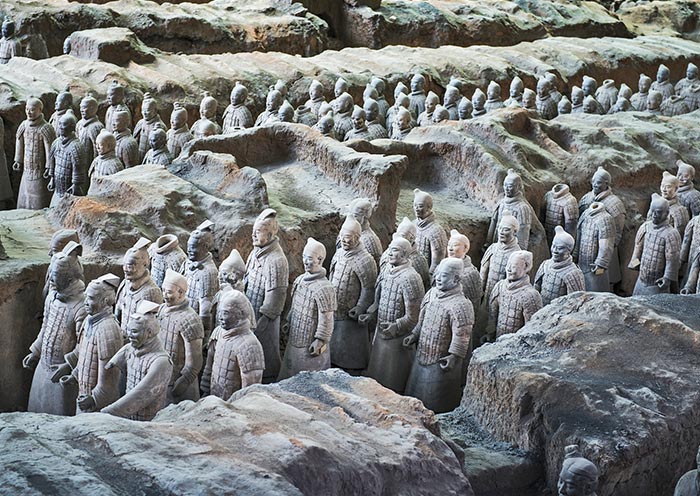
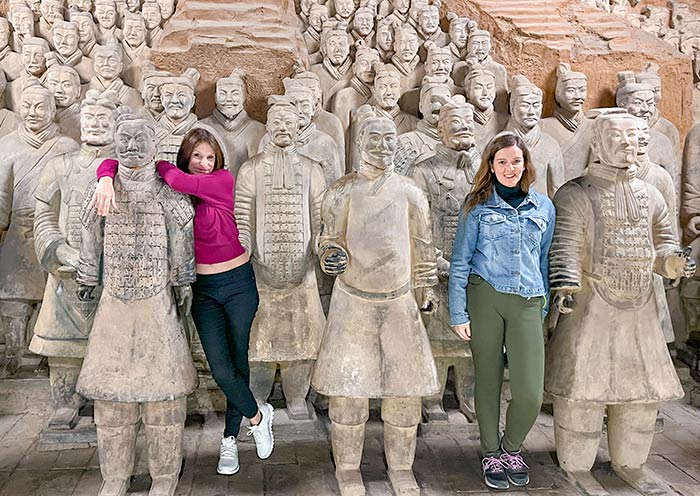


This morning, drive to visit the Xian Museum (Closed on Tuesday). It is one of the top museums in China, showcasing the 3,000-year history of Xian, the one-time capital of 13 dynasties, its economy, social life, as well as cultural exchange and trade with foreign countries. The museum is less crowded than the Shaanxi History Museum. The famous architect Zhang Jinqiu, who also designed the Shaanxi History Museum, designed this building. Its architectural design symbolizes the traditional Chinese concept of the universe - a round heaven and a square earth. With more than 110,000 pieces of cultural relics, including bronze wares, jade wares, gold and silver wares, three-color glazed wares, painting and calligraphy, miscellaneous wares, seals, Buddhist statues, stone carvings, porcelains, etc., the Xian Museum has achieved a wide reputation and popularity for its historical and cultural value. In fact, the Xian Museum is made up of an exhibition hall, the site of the Jianfu Temple in the Tang Dynasty, and the Small Wild Goose Pagoda.
Before entering the Xian Museum, you can enjoy a nice view of Jianfu Temple and its Small Wild Goose Pagoda. The Jianfu Temple used to be a royal temple of the Tang Dynasty (destroyed by war) and was rebuilt during Ming and Qing dynasties. The logo of the Xian Museum is designed based on the Small Wild Goose Pagoda, which shows the long history of the Xian Museum and the profound Chinese culture.
The Small Wild Goose Pagoda (World Heritage) is one of the two famous and important Buddhist pagodas erected in the Tang Dynasty about 1,300 years ago. It was named after its larger predecessor, the Big Wild Goose Pagoda, 5km away (which you will visit this afternoon). The two pagodas were a symbol of Chang'an (means constant peace). Xian (means west peace) was called Chang'an until the Ming Dynasty (1368-1644). The Small Wild Goose Pagoda was originally 15 stories tall, but a big earthquake in 1556 reduced it to its current 13 stories. The 13-story structure later suffered countless other earthquakes, yet it is still remarkably well-preserved. Today, "Morning Bell of Small Wild Goose Pagoda" is listed as one of the "Eight Sights of Central Shaanxi Province".
Then, move to Giant Wild Goose Pagoda (Big Wild Goose Pagoda) for a Hanfu Costume Experience. Hanfu is the traditional clothing of the Han Chinese, the predominant ethnic group of China for thousands of years. Hanfu is a significant symbol of Chinese civilization, and different stages of Hanfu's development correspond to different Chinese dynasties. Choose your preferred Hanfu and wear it to walk around the Giant Wild Goose Pagoda like the people from the Tang Dynasty. Traditional Hanfu fashion is in vogue now, and you will encounter many locals wearing beautiful Hanfu as you stroll through the courtyards, taking beautiful photos. Enjoy your Hanfu cultural tour inside the ancient buildings while gaining a better understanding of Hanfu, Chinese history, and culture.
The Big Wild Goose Pagoda (World Heritage), built about 1,370 years ago, is one of Xian's most recognizable landmarks and a symbol of the magnificence of the Tang Dynasty. This 7-story pagoda, standing in the tranquil Da Ci'en Temple, is one of China's best examples of a Tang-style pagoda (squarish rather than round). It was completed in AD 652 to house Buddhist sutras brought back from India by the monk Xuan Zang. His travels inspired one of the best-known works of Chinese literature, Journey to the West. Your guide can provide more information about Xuanzang, who set off from Chang'an (the ancient Xi'an) along the Silk Road, spent 17 years traversing 100 countries, and finally arrived in India, the cradle of Buddhism.
As evening falls, you won't want to miss the Largest Musical Fountain in Asia, located at the North Square of the Big Wild Goose Pagoda. The North Square of the Big Wild Goose Pagoda Music Fountain is controlled by a computer, and the fountains shoot streams of water that vary in height and shape in accordance with the rhythm of music (Water Phantom of Tang). The night view is especially breathtaking when the fountain is illuminated by LED lights.
After enjoying the "dance of water", it's time to visit the Grand Tang Dynasty Ever Bright City, which is located south of the Giant Wild Goose Pagoda and west of Tang Paradise. It is a 1,500-meter-long pedestrian street themed with Tang Dynasty culture, featuring buildings with Tang Dynasty (618 - 907) architecture and sculptures telling Tang stories. You can enjoy street performances, a variety of Xi'an food, and shopping here. It creates an immersive atmosphere to take you back to Tang Dynasty, providing a magical experience of walking through time. The best time to visit is at night, after the lights are lit up and people start to gather for fun. It is a place where people can embrace old and new cultures.


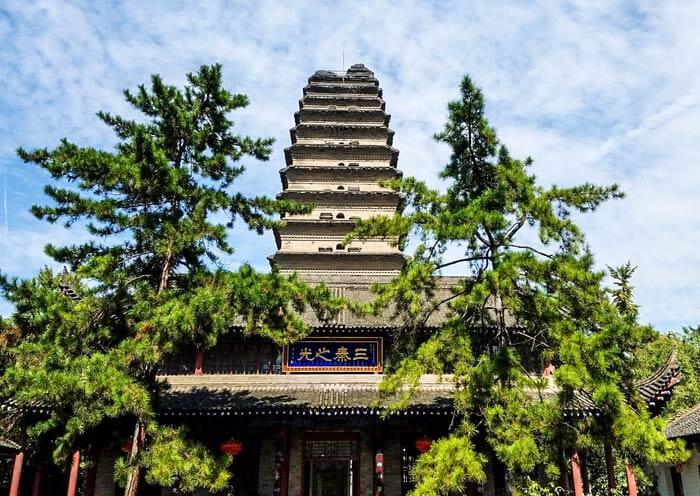
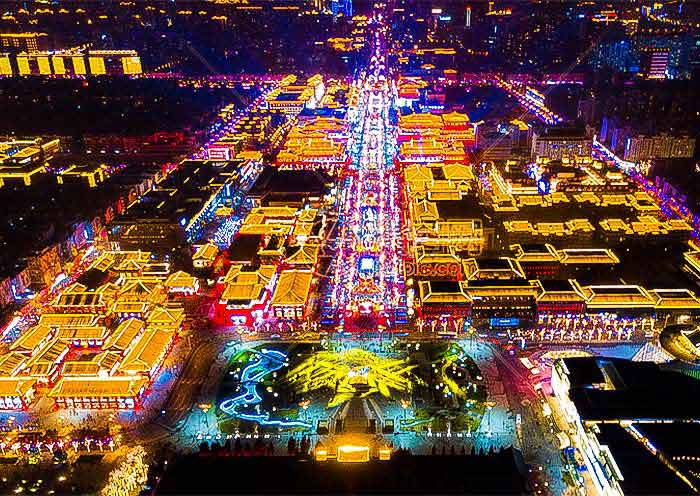
On this day, you will be transferred to the airport in Xian for a fligt to Dunhuang (about 2.5 hours). Dunhuang, a city in Jiuquan (酒泉市), which was formerly known as Suzhou (肃州), is the birthplace of the "su" character in Gansu Province (甘肃的“肃”). Dunhuang is a desert oasis of ancient wonders. Discover the hidden gems of China's western frontier. Explore the breathtaking Mogao Caves, a UNESCO World Heritage Site adorned with vibrant murals and intricate sculptures. Trek through the Gobi Desert, marveling at the Crescent Lake's turquoise waters and towering sand dunes. From stargazing under pristine skies to experiencing the thrill of sandboarding, and camel riding, Dunhuang offers a captivating journey through time and nature. Dunhuang is also famous for Tunhuangology (敦煌学), a specialized field of study dedicated to exploring and interpreting the vast cultural and historical treasures in the Mogao Caves.
Upon arrival in Dunhang, your guide will meet you at the airport and escort you to visit Mingsha Mountain & Crescent Lake (鸣沙山月牙泉) and even sit on the peak of Singing Sand Dunes (1,715 m) to wait for a stunning sunset in front of the Crescent Spring. The Singing Sand Dunes & Crescent Lake is praised as “one of the Top 5 Most Beautiful Deserts in China," "China's Best Natural Landscape Tourist Destination," and "China's Most Beautiful Moon-watching Spot." It is a geological park known for the unique spectacle of mountains, springs, and sand coexisting in the desert. You can enjoy various activities (self-pay) such as camel riding, sand sliding, desert motorcycles, off-road vehicles, helicopters, gliders... You will meet people in costumes of traditional Han clothing or Flying Apsaras.
The Mingsha Mountain is named for the sound produced by the moving sands, with recorded volumes of the singing reaching up to 83 decibels. This phenomenon of sand-producing sound is one of the Dunhuang Eight Views, known as "ShalingQingming沙岭晴鸣" in the Dunhuang County Chronicles敦煌县志, where Dunhuang's ancient name of Shazhou (沙洲) also originates. The Singing Sand Dunes stretches from the Mogao Caves in the east to the Dang River in the west, spanning about 40 km east to west and 20 km north to south. The mountain is formed from deposits of fine sand in five colors (red, yellow, green, black, white). The sand of Mingsha Mountain is carried by the wind from the Gobi Desert and the Kumtag Desert to settle here, gradually accumulating over time. The Crescent Lake is nestled amidst the Mingsha Mountain, named for its crescent moon-like shape. The spring water spans 242 meters from east to west and can reach up to 50 meters wide from north to south, with an average depth of around 1.5 meters. The spring is home to the Ironback Fish (铁背鱼local fish) and Seven Star Grass (七星草; medicinal herb) which is included in the "Three Treasures of Crescent Spring月牙泉三宝" by locals (the third one is Five-colored Sand五色沙), believed to bring good luck to people. So try your luck to find them. Remarkably, the sand has not encroached upon the spring, and the water remains clear and abundant, traversing through time, creating the world wonder of the "First Spring in the Desert沙漠第一泉".
Optional activities in the Mingsha Mountain Scenic Area:
Shoe covers; Sightseeing vehicle; Camel riding; Motorcycle; Off-road vehicle (seats 3 people); Paragliding; Helicopter (seats 3 people).
After the tour, get back to Dunhuang city for accomoation.
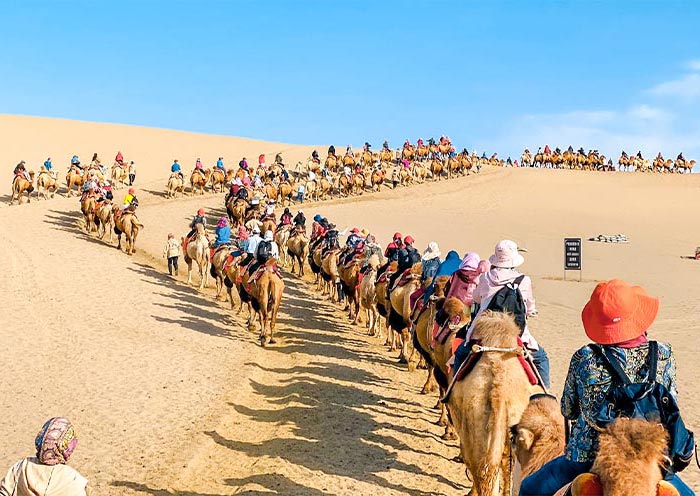
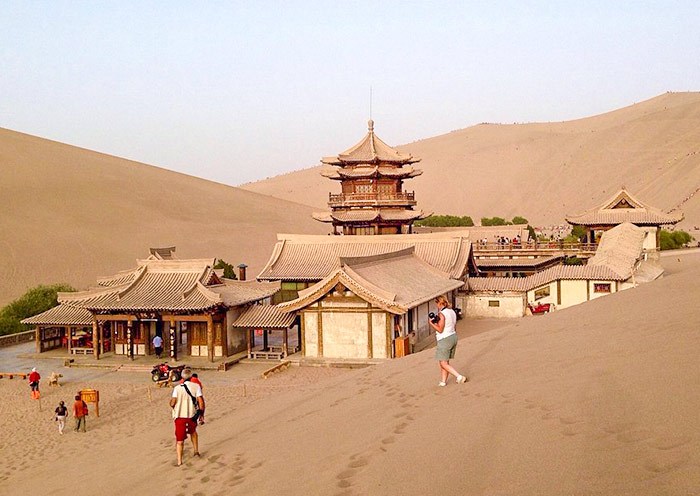
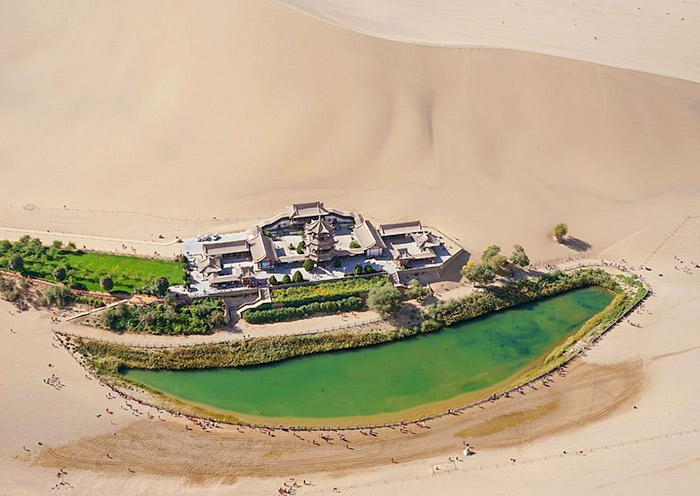
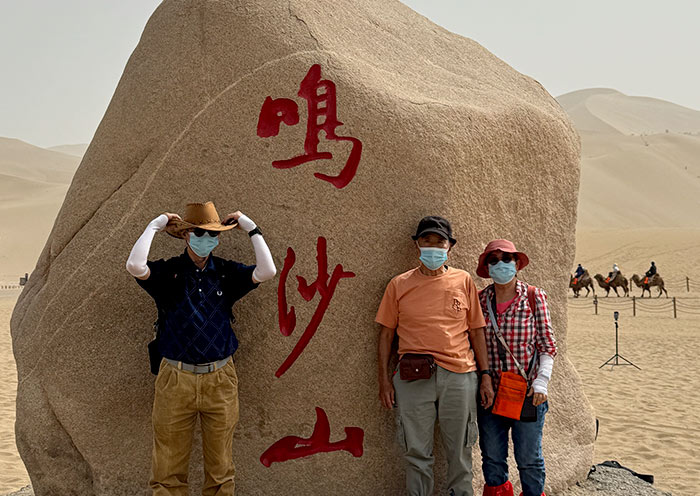
On this day, you will first visit Mogao Caves in Dunhuang. Mogao Grottoes is the must-visit place for a trip to Gansu. You may read many stories about A. Stein (斯坦因a British archaeologist and explorer) and the vast trove of artifacts (Paintings, Sculptures, Manuscripts) he brought from the Mogao Grottoes in the early 20th century. You may have already seen the artifacts Stein collected in the British Museum in London. Or you may have heard of Paul Pelliot (French archaeologist & Sinologist) who like A. Stein, conducted several expeditions to Dunhuang and collected a large number of artifacts which is primarily housed in the Guimet Museum in Paris, France. Welcome to visit Mogao Grottoes the source of the world famous Dunhuang Manuscripts (Dunhuang Yi shu敦煌遗书; Cave 16-17) and explore valuable insights into the history and culture of the Silk Road.
The Mogao Caves (Mogao Grottoes莫高窟), also known as the Thousand Buddha Grottoes (千佛洞), are acclaimed as the "Treasure House of Eastern Art东方艺术宝库." The remaining 735 caves are dotted along cliffs rising about 15-30 m high and over 1,700 m, forming a magnificent spectacle of this world cultural heritage site. Despite the significant loss of artifacts to oversea museums, the Mogao Caves remain one of the world's largest and most richly endowed repositories of Buddhist art. Spanning sixteen kingdoms, Northern Wei, Western Wei, Northern Zhou, Sui, Tang, Five Dynasties, Song, and Western Xia dynasties, the construction of the Mogao Grottoes lasted for over a thousand years until the Yuan Dynasty, resulting in about 45,000 ㎡ murals and 2,415 clay sculptures. In the year 366 AD, the first cave of the Mogao Caves was carved into the cliff by the Monk Le Zun (乐僔; over 1,650 years ago). In the 7th century, Xuanzang (唐僧) translated numerous Buddhist scriptures at the Mogao Caves. In 1900, Daoist Wang (王圆箓) discovered the Library Cave (藏经洞; Sutra Cave; Cave 16). From 1941 to 1943, Zhang Daqian (张大千), a prodigious Chinese artist of the twentieth century, copied 276 murals here.
At the Mogao Caves, you can explore various types of grottoes (large statue caves, Nirvana caves, central pillar caves, vaulted ceiling caves, hall caves) and learn about the pigments used by ancient artists in painting murals (cinnabar, orpiment, azurite, mica, gamboge, gold leaf, shell powder). You can admire narrative paintings of Buddhist themes (the life of Shakyamuni Buddha, the Nine-Colored Deer Sacrificing Itself to Save Others), diverse clay sculptures (Buddha statues, Bodhisattva figures, guardians, deities), Flying Apsaras (飞天) and Swirling Dances (Sema; 胡旋舞) in the prosperous Tang Dynasty, as well as the attire and customs of patrons from various dynasties. At the Mogao Caves, you can witness the brilliance and charm of the ancient Silk Road and the efforts and achievements of generations of cultural heritage preservation workers and researchers (such as Chang Shuhong常书鸿, a Chinese painter known as the "guardian of Dunhuang"敦煌守护神).
You can start at the Mogao Caves Digital Center (莫高窟数字中心), watch a 40-minute digital film, and then take a shuttle bus to the caves. Guided by the site interpreters, you will visit 8 caves sequentially (Ticket A; no photography allowed inside the caves). You may have the chance to see significant caves like the Library Cave (Caves 16-17; the largest cave), the Nine-Storey Tower (Cave 96; one of Mogao's iconic structures; the largest Buddha statue), the Nirvana Sutra Cave (Cave 148; reclining Buddha), the Early Tang Treasures Cave (Cave 332), and the Northern Wei Masterpieces Cave (Cave 257). The actual eight caves visited may vary based on the site's conditions. If interested, you can visit the Cultural Relics Protection and Display Center (文物保护陈列中心) to see 1:1 replicas of eight special caves, including Caves 275, 249, 285, 419, 220, 217, 25, and 3 (photography allowed).
Notes:
To protect the caves, the Mogao Caves implemented a real-name reservation system for timed visits, implementing a daily limit on the number of visitors. The ticketing system includes A/Regular tickets (6,000 tickets/day) and B/Emergency tickets (12,000 tickets/day; for domestic visitors only). A Ticket includes access to 8 caves and 2 digital movies. B ticket includes access to 4 caves and the Cave Artifacts Conservation and Research Exhibition Center.
Visitors must follow the visiting arrangement set by the management of the Mogao Caves on the day of the visit. The visiting order of the Mingsha Mountain and the Mogao Caves is subject to change.
If you are particularly interested in the caves, you can also purchase tickets for special caves at the site (may require queuing) to explore more exquisite caves. The special caves (self-pay) are divided into Line 1 (Caves 45, 320, 321, 420, 9) and Line 2 (Caves 275, 45, 156, 158, 159).
During the Dunhuang Cultural Expo or in case of inclement weather or other factors affecting the visit, if the Mogao Caves cannot be visited as planned, our company will refund the Mogao Caves tickets according to the actual cost, or arrange a visit to the Western Thousand Buddha Caves as an alternative.
In the afternoon, you'll be transferred to Liuyuan South Station (about 2-hour drive) to board the high-speed train to Turpan North Station (3.5-hour journey). Upon arrival, your tour guide and driver will greet you at the exit and escort you to your hotel in Turpan.
Turpan (吐鲁番) is located in the eastern part of Xinjiang. Situated in the Turpan Depression at 154 m below sea level, it's the second-lowest depression in the world and the hottest spot in China, earning it the nickname "Fire Land."
Despite its arid climate, the ingenious Karez irrigation system has transformed this desert region into a fertile oasis, renowned for its agriculture, especially grape production. As a crucial stop on the ancient Silk Road, Turpan served as a hub for trade and cultural exchange between East and West. The area is dotted with historical sites - ancient city ruins, remnants of fortifications, and Buddhist cave complexes - testifying to its rich cultural roots.
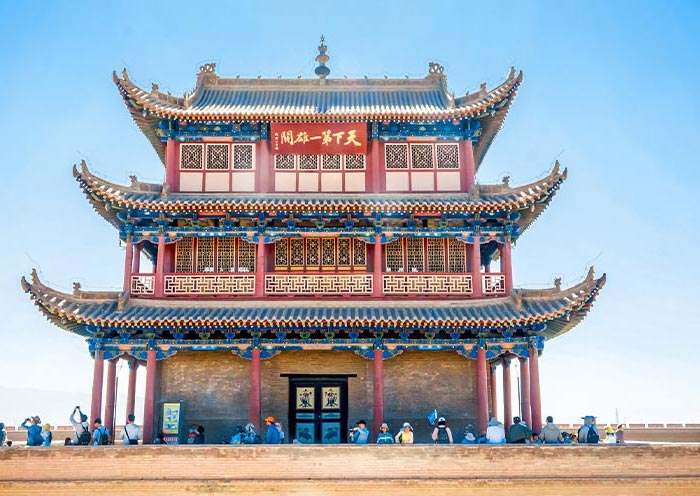
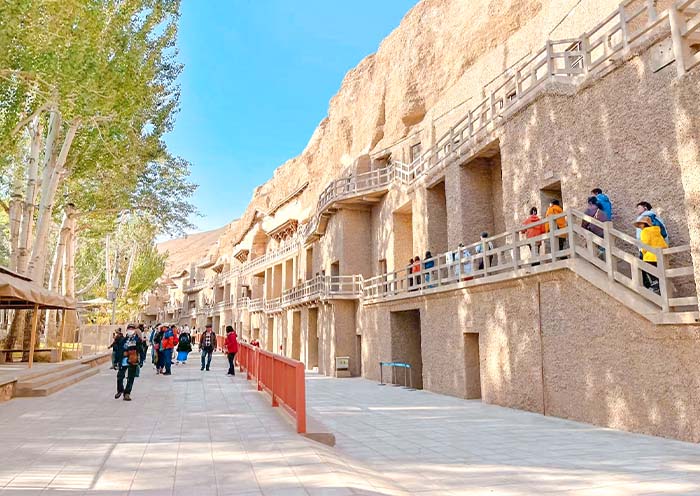
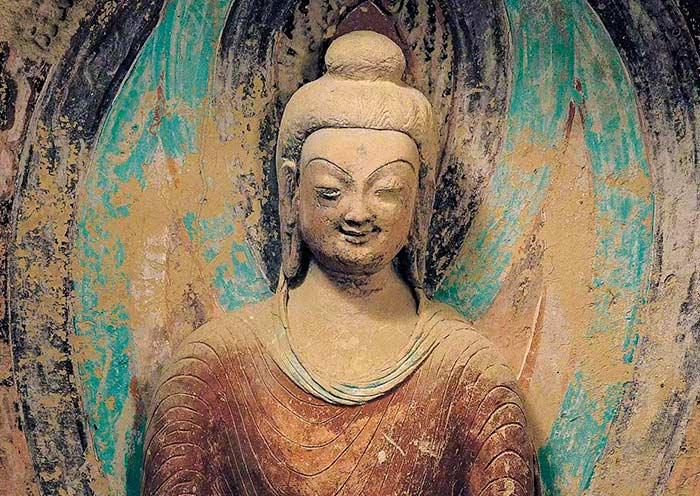
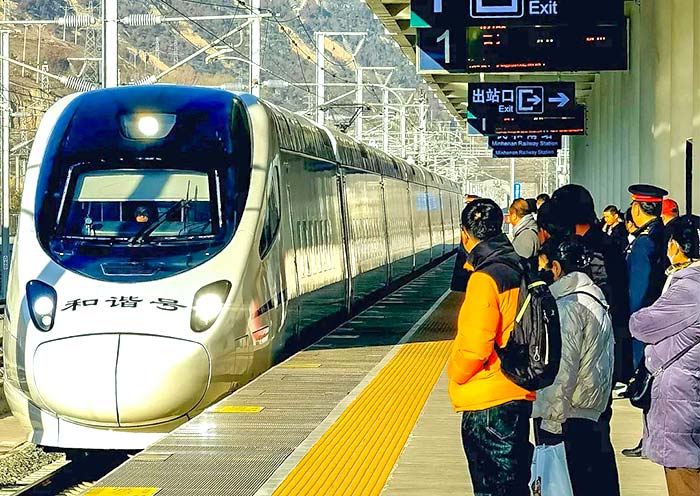
After breakfast, begin your visit to Jiaohe Ancient City (交河故城), one of the best-preserved ruins of ancient cities along the Silk Road and inscribed on the UNESCO World Heritage List as part of the joint application "Silk Roads: the Routes Network of Chang'an-Tianshan Corridor." Jiaohe Ruins offers a profound glimpse into ancient city planning and the historical complexity of the civilizations on the Silk Road.
Nestled between two deep river valleys, Jiaohe, meaning "the confluence of two rivers," is strategically positioned on a large, steep plateau that provides formidable natural defenses. As a key city connecting the Central Plains (中原) and the vast regions of the Western Regions (西域), Jiaohe Ancient City played a vital role in the transportation network of the Silk Road. It witnessed the bustling trade along the Silk Road and the exchange and integration of Eastern and Western cultures.
Unlike many ancient cities, its structures were not built up from the ground but carved down into the existing plateau of loess soil. Walking through the ruins, you can see the remains of government offices, residential houses, Buddhist stupas, and temples. These remnants not only provide important physical evidence for studying the history and culture of the Silk Road but also offer valuable insights into the social, economic, and religious life that shaped this region. Tips: There is no shelter inside the ruin, so be mindful of sun protection.
The History of Jiaohe Ancient City
The Ancient City of Jiaohe witnessed the development of civilization in the Western Region and the Silk Road. Approximately 2,000 years ago, it was established as the capital of the Jushi Kingdom (车师国), one of the 36 kingdoms in the Western Regions (西域三十六国). Following Zhang Qian's pioneering efforts during the Western Han Dynasty to carve a path through the Western Regions, Jiaohe City emerged as a crucial hub on the Silk Road. In 60 BC, the Han Dynasty central government established the Protectorate of the Western Regions (西域都护府) to administer the various states in the region, officially incorporating the Western Regions into the Chinese domain. During the Northern and Southern Dynasties, Jiaohe became a county under the jurisdiction of Gaochang(高昌). The city reached its zenith during the Tang Dynasty with the establishment of the Anxi Protectorate (安西都护府), marking a new era in the governance of the Western Regions. During this period, Jiaohe was a bustling center of international trade and vibrant cultural exchanges among diverse ethnic groups. From the 19th to the 14th century, due to the impact of wars, Jiaohe gradually declined and eventually became a ruin.
Next, head to the Karez System (坎儿井) to learn about the ancient underground irrigation system a few thousand years ago and how this system has benefitted the people along the desert's edge, transforming barren land into a lush oasis. This traditional engineering marvel is considered one of China’s three great ancient engineering projects, alongside the Great Wall and the Grand Canal. It has been recognized in the 2024 World Irrigation Project Heritage list.
The origin of the Karez Irrigation System
Turpan, in Xinjiang, is one of China's most arid regions, with annual rainfall of only 16 millimeters and evaporation exceeding 3,000 millimeters. These extreme conditions have led to severe surface water scarcity. To improve their survival prospects, people ingeniously utilized the natural slope of mountains to channel underground rainwater, glacial melt, and snowmelt from spring and summer to the surface for irrigation. This method greatly reduced water loss through surface evaporation, meeting the water needs of this arid region. It’s often said, "Without the Karez, there would be no Turpan; without the Karez, there would be no civilization in Turpan." The Karez has turned extremely arid basins into green havens, making Turpan a crucial corridor for East-West exchanges along the Silk Road and a place where diverse cultures converge and coexist.
The Karez system is often referred to as the "Underground Great Wall". In Xinjiang, there are over 1,700 karez wells which, if connected, would stretch over 5,000 kilometers, forming a vast underground river network. It is estimated that the Karez system has a history of over 2,000 years. Imagine centuries ago, without modern measuring tools or mechanical assistance, how ancient people located underground water sources, determined the gradient and direction in complete darkness, and connected such lengthy channels. Today, you have the opportunity to step into the Karez and personally unravel the secrets of this most mysterious hydraulic engineering project, experiencing first-hand how ancient innovation works.
Next, continue your exploration at the Emin Minaret (额敏塔), the tallest Islamic minaret in Xinjiang. Also known as Sugong Ta (苏公塔), this remarkable structure was erected in 1778 by the local ruler Suleiman, in tribute to his father, Emin Khoja, whose considerable efforts helped maintain national unity.
It stands 44 meters (144 feet) tall and is made from sun-dried bricks, which give it a distinct, earthy color. The tower's cylindrical body tapers elegantly as it rises, topped by an ornate, pointed dome. Uyghur artisans crafted up to 15 different types of brick patterns, including waves, diamonds, floral clusters, and crosses, which create endlessly looping designs around the tower. Gazing up from beneath the tower, you can fully appreciate the simplicity and grandeur of these designs. The accompanying mosque is an integral part of the complex, which you can visit as well. Emin Minaret serves not only as a religious structure but also as a cultural icon for the Uyghur people, embodying a unique blend of Islamic and Uyghur architectural traditions.
Afterward, you will embark on a scenic 3-hour drive (180 km) from Turpan to Urumqi. Along the way, you’ll pass the striking Salt Lake and the impressive wind power station, the largest in Asia, at the foot of the Tianshan Mountains.
Stay overnight in Urumqi.
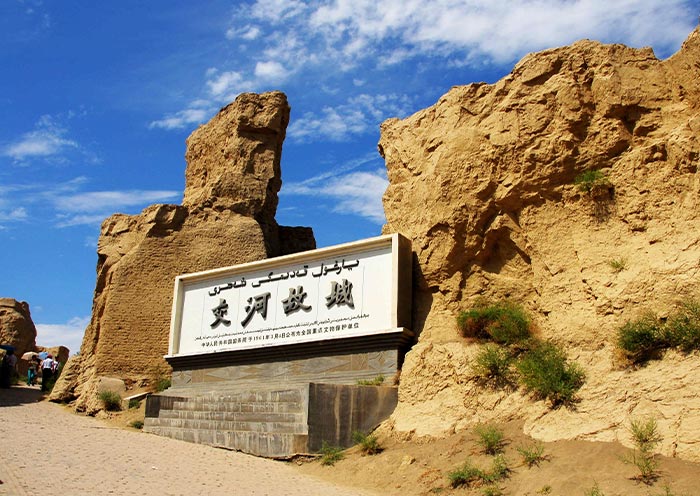
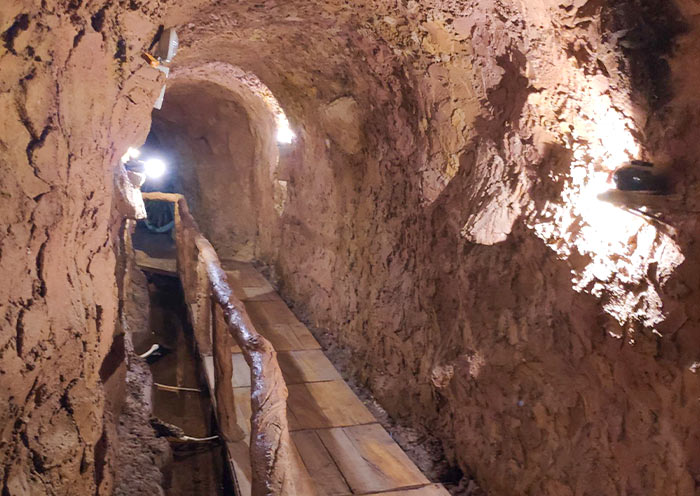
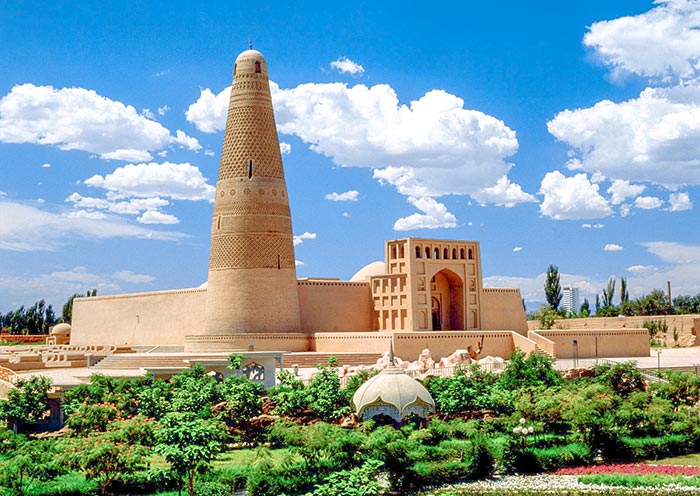

Today, you'll embark on a full-day exploration, from the breathtaking natural beauty of Tianshan Tianchi Lake to the enlightening exhibits at the Xinjiang Regional Museum.
In the morning, you'll be driven approximately 70 kilometers (about 1-1.5 hours) to Heavenly Lake of Tianshan (天山天池), a UNESCO World Heritage Site. Nestled at an elevation of around 1,980 meters (6,500 feet) above sea level, this serene alpine lake is surrounded by lush forests, snow-capped peaks, and breathtaking landscapes. Renowned for its crystal-clear waters, panoramic Bogda mountain views, and connections to ancient myths and legends, Heavenly Lake is a must-see. One such legend involves the Queen Mother of the West (Xi Wangmu), who is said to have hosted a banquet for the Eight Immortals here.
Upon arrival, you'll first take 40-minute sightseeing bus ride through the dramatic mountains. Then, enjoy 10-minute walk to the picturesque lake. Enjoy a leisurely stroll around Heavenly Lake, taking in the fresh mountain air and diverse flora and fauna.
Optional Activities (additional fee required):
- Boat Ride:Cruise across the peaceful waters of the lake, immersing yourself in its beauty and the reflections of the snow-capped mountains.
- Cableway Ride:Take a cableway up to Mayashan for even more stunning views of Bogda Mountain.
After lunch, return to Urumqi and visit the Xinjiang Regional Museum (新疆维吾尔自治区博物馆). This renowned museum showcases theregion's rich history, ethnic cultures, and the ancient Silk Road. Explore extensive collections that include exoticartifacts from the Silk Road, and fascinating displays of traditional ethnic costumes and household items from variouscultures such as Uyghur, Kazakh, and Han. The most unique is the exhibit of ancient mummies, which houses some of theworld’s best-preserved mummies, including the famous “Loulan Beauty 楼兰美女”, one of the 3,800-year-old desert-mummifiedbodies of Indo-European ancestry. Remember to take a look at the 'Five Stars Rise in the East, Benefit China' HanDynasty Brocade Armband (”五星出东方利中国”汉代锦护臂), which is one of the first batches of cultural relics in China that wereprohibited from being exhibited abroad. It is acclaimed as one of the greatest archaeological discoveries of20th-century China. Also, the "Fu Xi and Nu Wa Silk Painting (伏羲女娲图)" illustrates the image of human ancestors fromancient Chinese myths and legends, dating back to the Tang Dynasty. The museum’s immersive exhibits will transport youback in time, allowing you to learn about the fascinating history of the Silk Road and the cultural interactions thathave shaped Xinjiang.
Note: If the Xinjiang Regional Museum is closed on Monday, we will visit the Urumqi Grand Bazaar (新疆国际大巴扎) instead.
After the tour, return to your hotel in Urumqi.
Free Time Ideas:
The Urumqi Grand Bazaar, also known as the Xinjiang International Grand Bazaar, is a vibrant marketplace and a perfect way to spend your free time. Explore the many shops and stalls offering various local products, including traditional Uyghur clothing, carpets, handmade crafts, silk scarves, jewelry, spices, and dried fruits. Be sure to try local favorites such as lamb kebabs, polu (pilaf), naan bread, and laghman (hand-pulled noodles). Additionally, the architecture of the Grand Bazaar itself is worth admiring with its grand minarets, domes, and intricate Islamic-inspired designs.
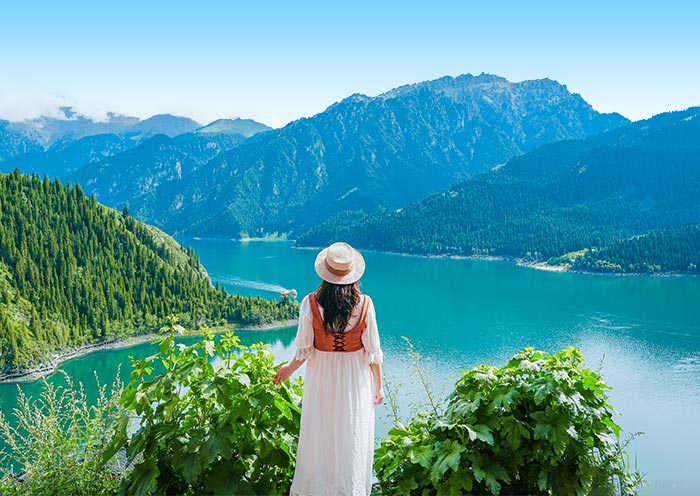
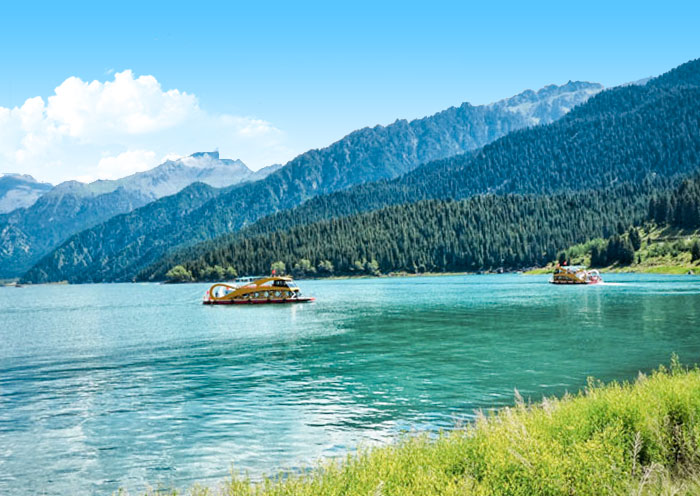
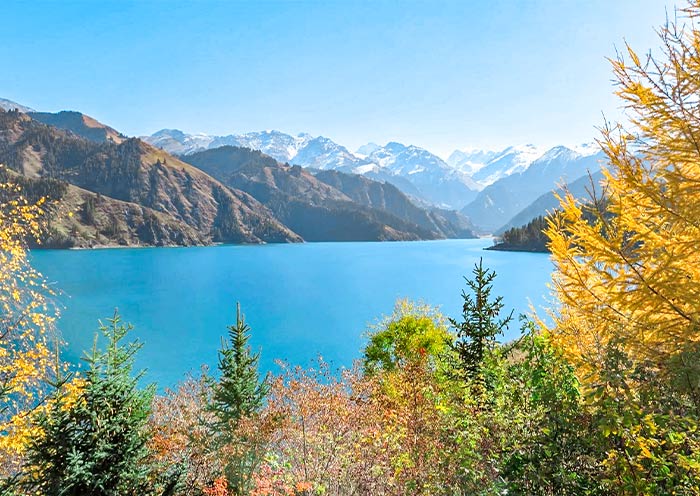
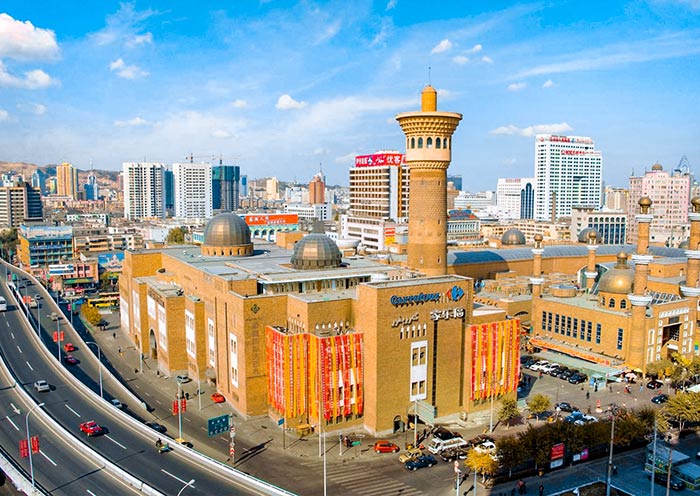
This early morning, you will take a flight to Kashgar (about 2 hrs). Upon arrival at Kashgar Airport, your local tour guide will greet you and escort you to downtown Kashgar.
Kashgar (喀什), located in the southwestern part of Xinjiang, was historically known as Shule ( (疏勒国), and was one of the thirty-six kingdoms of the Western Regions (西域三十六国). For centuries, Kashgar has been a significant city in southern Xinjiang. It served as the western terminus for the northern, central, and southern routes of the ancient Silk Road, connecting Asia and Europe. It has long been a transportation hub and distribution center for goods between East and West. Trade is highly developed here, earning it the title of "Kingdom of Bazaars (markets)." Diverse cultures from Asia and Europe converge on Kashgar, clashing and blending intensely with the local culture, injecting new vitality into Kashgar. This cultural fusion is specifically reflected in Kashgar's architecture, cuisine, and vibrant markets. The city has been a melting pot of various ethnicities, including Uyghurs, Han, Tajiks, and others. Kashgar's geographical location is near the Taklamakan Desert and surrounded by the Kunlun Mountains and the Pamir Plateau provides spectacular natural scenery.
Your exploration can begin in Kashgar Old City (喀什老城市). The Old City is the soul of Kashgar, encapsulating over two millennia of cultural and commercial exchanges along the Silk Road. Situated at the heart of the city and spread across 3.6 square kilometers, the Old City is a living museum, telling tales of ancient trade and cultural fusion. As a crucial hub for East-West traffic and a distribution center for goods, it offers a vivid glimpse into past prosperity.
Within Kashgar Old City, the streets and alleys intersect intricately, narrow and winding paths with buildings of varying heights, creating a layout that resembles a maze. As you wander through, you'll see traditional Uyghur mud-brick houses and numerous structures with Islamic features, such as pointed arches, domes, intricate woodcarvings, and colorful ceramic tiles. These architectural and street designs perfectly Central Asian and Islamic architectural elements with Uyghur characteristics, creating a sense of time travel for visitors.
The Kashgar Old City thrives with commercial activity, with numerous bazaars and street markets scattered throughout, such as the Pottery Bazaar, Flower Pot (Doppa) Bazaar, Blacksmith Bazaar, Woodwork Bazaar, Medicine Tea Bazaar, Han Bazaar (Food Street)... This area is not only an excellent place to purchase and appreciate various handicrafts but also an ideal spot to savor Uyghur cuisine. Indulge in succulent lamb kebabs (羊肉串), rich and spicy lagman noodles (拉条子), savory samsas (烤包子), and freshly baked Naan (囊). As you wander through, the scenes, sounds, and scents on the streets seem to transport you back to the heyday of the Silk Road. You can almost visualize the bustling caravans, with merchants from China, Persia, Arabia, and many local regions converging here. The air is filled with the melodious ringing of bells on camels' necks.
Furthermore, Kashgar Old City is a hub for numerous cultural and religious activities as well as a place for residents' daily lives and social interactions. One of the most notable landmarks is Id Kah Mosque(艾提尕尔清真寺), one of the largest mosques in China, attracting thousands of worshippers daily. To experience local life firsthand, you can visit a century-old teahouse (百年老茶馆). As you sit, sip tea, and observe, you'll appreciate the traditions and hospitality of Uyghur people. With luck, you might have to a chance to witness locals playing and singing traditional Rawap music.They may even invite you to join in, twirling your hands as you dance.
If you happen to visit Kashgar on a Sunday, you can't miss the famous Kashgar Livestock Market (牛羊巴扎).
On the northern edge of Kashgar city, there is a massive livestock trading market. Every Sunday, this market becomes as lively as a carnival. People from surrounding villages flock here with their sheep, cows, and even camels.
At the market, you can witness Uyghur herders proudly showcasing their livestock. The traders typically grasp each other’s hands inside the spacious sleeves of their robes, silently signaling their price offers with their fingers - an intriguing and silent process full of wit. Once the price is agreed upon, neither party can back out. This traditional method of trade has been continuing for thousands of years. It’s an excellent opportunity for photography and to witness the ancient commercial traditions that are fast becoming rare in the modern world.
Tips: Due to the large number of livestock in the market, prepare yourself for a strong odor.
After the tour, be escorted to your hotel in Kashgar.
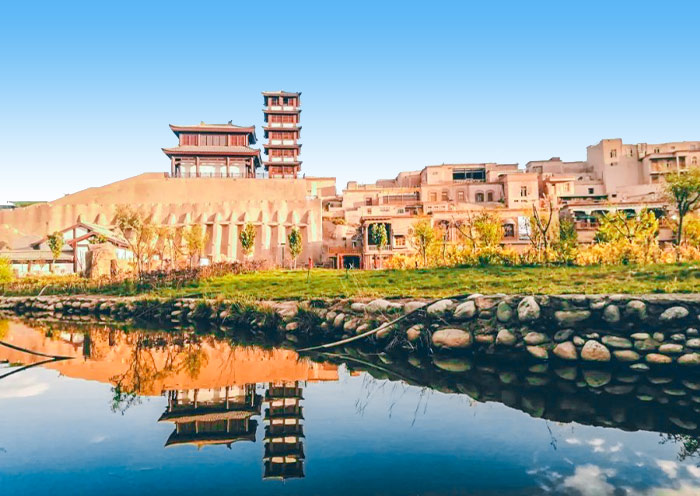
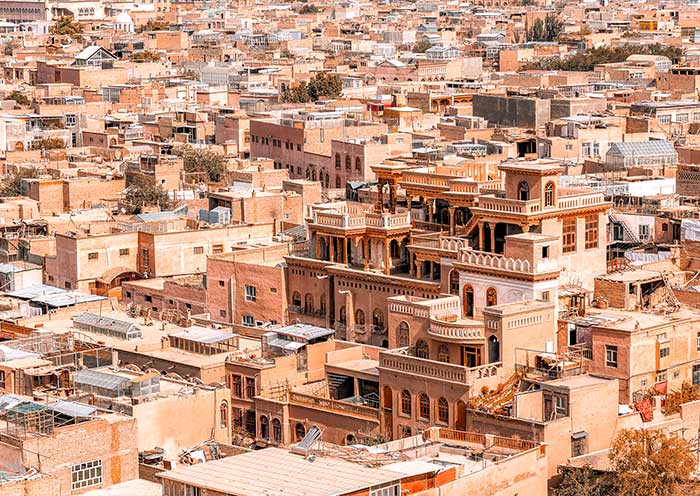
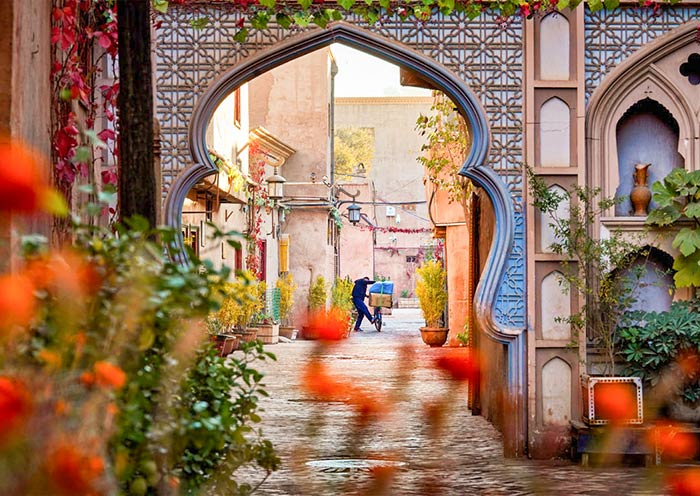
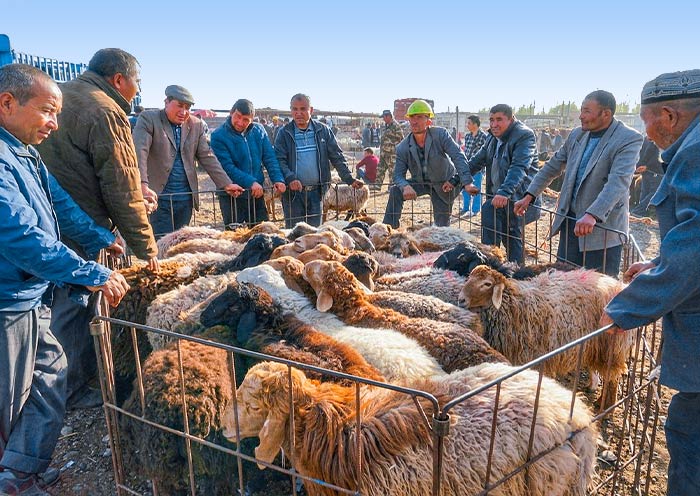
This morning, your guide and driver will pick you up from your hotel in Kashgar to embark on an exhilarating road trip along the China-Pakistan Highway. Along the way, you can enjoy the beautiful landscape of Pamirs Plateau, visit Baisha Lake and Karakul Lake, admire the distant and mysterious Muztagh Ata Peak, Kongur Tagh, Kongur Tiube. Finally, you will drive back to Kashgar. (Total distance:400 kilometers, approximately 8 hours of travel).
The China-Pakistan Highway (中巴公路), also known as theKarakoram Highway (KKH), is one of the world's highest paved international roads. It connects China and Pakistan across the Pamir Plateau (帕米尔高原) and is locally referred to as the Pamir Highway. Historically, routes across the Pamir Plateau - known as Congling (葱岭) in ancient times - were vital parts of the Silk Road. This section posed one of the most daunting challenges for merchants and travelers due to its harsh, rugged terrain. Here, several of the world's renowned mountain ranges - the Himalayas, the Karakoram, the Kunlun Mountains, the Tianshan Mountains, and the Hindu Kush - converge and radiate outward, forming a massive mountainous junction. Today, the China-Pakistan Highway has transformed these perilous trade routes of the past into magnificent thoroughfares, attracting numerous tourists to the Pamir Plateau to experience its stunning natural scenery.
Along the way, you will visit the following attractions:
Baisha Mountain-Baisha Lake Scenic Area (白沙山-白沙湖景区):
As you drive along National Highway G314, you'll encounter Baisha Lake (白沙湖) , also known as Bulunkou Lake - a striking plateau lake nestled in the Pamir Plateau (elevation:about 3,660 meters). From its shore, you're treated to a stunning vista: half pristine blue water, and half white sand mountain, both harmonizing with distant snow-capped peaks to create a magnificent spectacle.
On the lake's northern shore stands the renowned Baisha Mountain(白沙山), winding for over 1,200 meters. The dark mountain body, covered with white sand, presents a soft silvery-white color under the clean sunlight of the Pamir Plateau, resembling white silk. Legend has it that as the lake water gradually dries up in autumn and winter, the white sand at the bottom of the lake emerges. In spring, the wind blows this sand onto the mountain, creating the extraordinary spectacle of sand accumulating into a mountain. Whenever strong winds blow, Baisha Mountain emits a sound, earning it the name "Singing Sand Mountain." The southern shore of the lake is embraced by a chain of snow-capped mountains, with the highest peak being Mount Kongur Tagh at an elevation of 7,530 meters, adding further grandeur and mystery to this captivating landscape.
Karakul Lake (喀拉库勒湖):
Karakul Lake is a high-altitude moraine lake (elevation:about 3,600 meters).Its name in the Kyrgyz language means "Black Lake," attributed to its deep, dark waters. However, if you spend enough time by the lake, you will notice that it changes colors under different lighting conditions, appearing deep blue, emerald green, or ink black, earning it the nickname "the ever-changing lake."
Yet, the true highlights of Karakul Lake are the imposing peaks known as the "Kunlun Trio" that tower behind it: Kongur Tagh, Kongur Tiube, and Muztagh Ata, with altitudes of 7,719 meters, 7,595 meters, and 7,546 meters, respectively. On clear days, their majestic reflections are perfectly cast upon the glistening surface of the lake, creating the most iconic views of Karakul Lake. Among these, Muztagh Ata is particularly striking, covered with many glaciers, and is known as the "Father of Ice Mountains."
After tour, you will you will drive back to Kashgar along the scenic China-Pakistan Highway. You'll have another opportunity to admire the spectacular snow-capped peaks from various angles on both sides.
Stay overnight in Kashgar city.
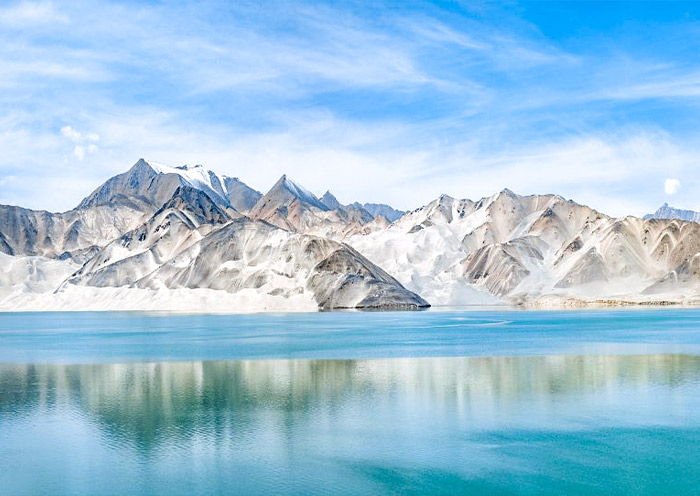

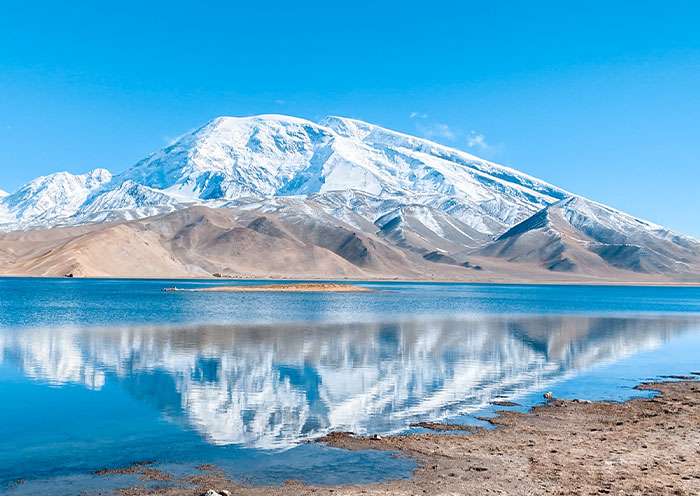
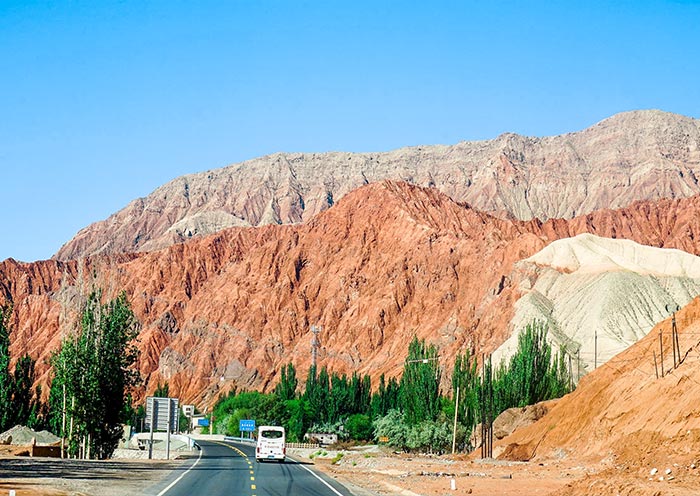
After breakfast, it is time to end your 10 Days China Silk Road Tour. You will have some free time in Kashgar and explore more at your own pace till your guide escorts you to the airport for your flight to your next destination.
Departure Ideas
Kashgar Airport: Kashgar International Airport (IATA: KHG, ICAO: ZWSH), is one of the westernmost airports in China. The airport hosts a number of airlines that operate regular flights to major cities across China such as Urumqi, Beijing, Shanghai, Xi'an, Chengdu, and Guangzhou. It also handles international flights, including routes to cities in Central Asia.
Road Border Crossings: The Torugart Pass and Irkeshtam Pass are important channels between China and Kyrgyzstan. The Karasu Port is a crucial gateway between China and Tajikistan. The Khunjerab Pass is the only land border crossing between China and Pakistan. If you're considering departing via a road border crossing and require transportation, please contact your travel advisor for specific cost and arrangement details.
Thank you for choosing Asia Odyssey Travel for your Silk Road Tour, we are always here working for you and hope to see you again for your next trip to China/Asia. Safe journey!
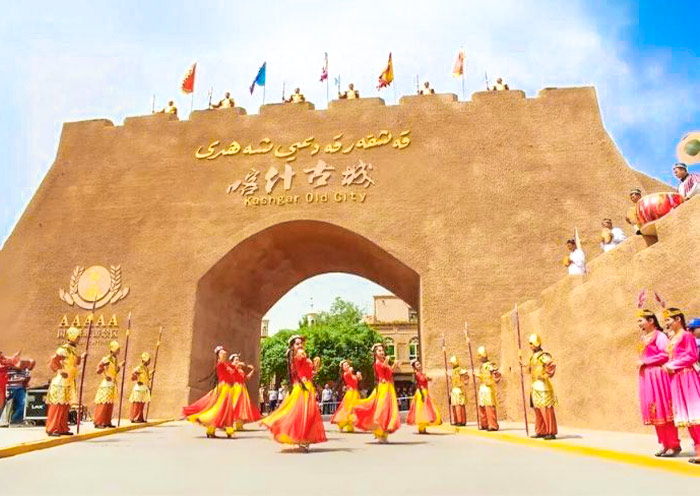
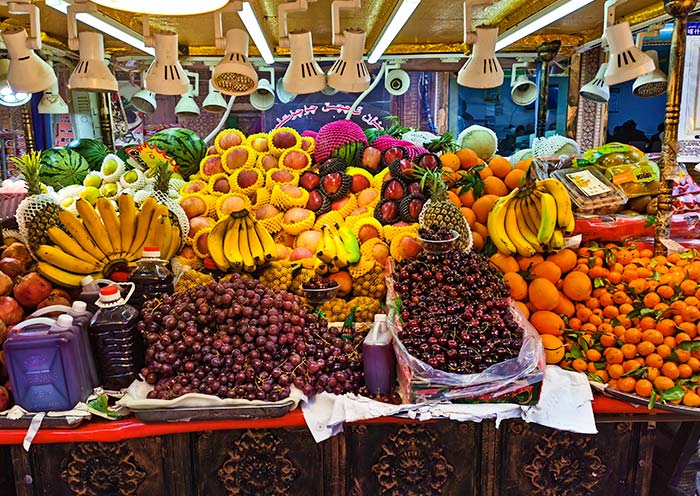
Price: What’s Included & What’s Excluded
What's Included:
What's Excluded:
Hotel Conditions for Silk Road Tours


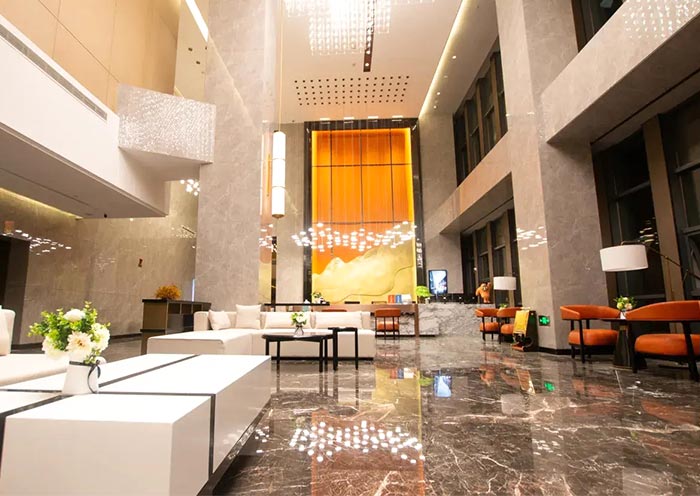
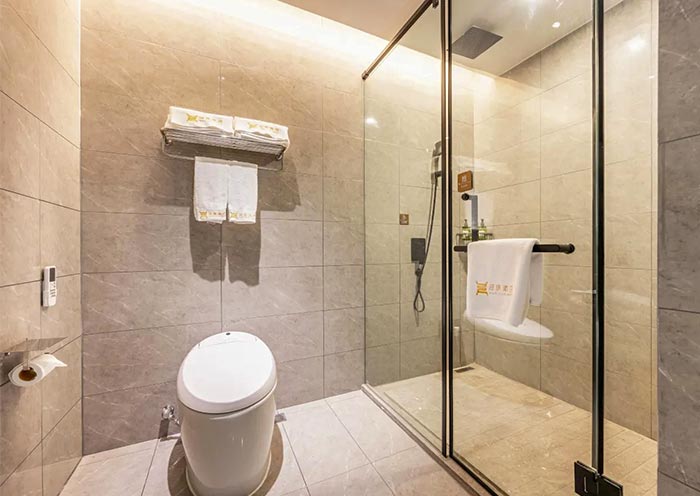
3 to 5 Star Hotels on the Silk Road Route Destinations:
Enjoy comfortable 3-star, 4 star or 5 star hotels along the Silk Road route, offering essential amenities for a relaxing stay after each day's adventures. These hotels provide a welcoming atmosphere with friendly service, perfect for Silk Road travelers.
Recommended Length to Stay (Xinjiang, Gansu & Qinghai)
To fully experience the Silk Road's highlights, we recommend a silk Road tour of 5-12 days. (1) One-Destination Deep Dive: Immerse yourself in the wonders of either Xinjiang (3-5 Days) or Gansu (5 Days). (2) Classic Silk Road Experience: Combine Xinjiang and Gansu together for a comprehensive exploration.(3) Ultimate Silk Road Journey: Extend your trip to include Qinghai and experience China’s diverse landscapes.
Standard Twin Room
Standard twin rooms on Silk Road group tours feature two comfortable beds, private bathrooms, and basic amenities. These rooms are designed for travelers seeking a cozy, convenient space to rest and recharge during their Silk Road journey.
Photo Gallery for This Itinerary
Latest Silk Road Tours Reviews from Our Customers

Jess
Malaysia
Destination(s): Beijing, Xian, Shanghai, Zhangjiajie
Date of Experience: Sep 04, 2025
Tour Customized by: Yee
You May be Interested in This Tour: 26 Days In-Depth Vietnam China Japan Tour: Ultimate Asia Contrast

Claudia Konrado
Brazil
That’s when a friend recommended Asia Odyssey Travel (AOT), and it was the best decision we made! Not only did they completely customize our entire trip, but they did so at a perfectly reasonable cost. Our travel agent, Abby, was absolutely incredible. She worked tirelessly with us to build out an itinerary, patiently answering all our questions, offering guidance, making changes, and adding new ideas with such care and professionalism. From Disney and Universal for the teens to visits to TeamLab Planets, museums and temples and shopping excursions, ending with a relaxing beach time in Okinawa, Abby worked with us and ensured there was something wonderful for everyone. Even during the trip, she was always available to help and provide support. I truly can’t express how much Abby made a difference in our experience. The entire team at AOT, from the guides to the drivers, was consistently helpful and attentive, ensuring every moment of our journey was smooth and enjoyable. We are so grateful for the wonderful memories created, all thanks to the dedication and expertise of AOT team. We highly recommend them for an exceptional travel experience.
Date of Experience: Jul 01, 2025
Tour Customized by: Abby
You May be Interested in This Tour: Customized Tour

Cheers
Britain
I’m so glad we chose to do this tour! We were looking for a way to escape the summer heat, and Hokkaido was a dream come true. The air was so fresh and the scenery was just incredible—I swear my photos don’t even do it justice.
The highlight for me was definitely the lavender fields in Furano. They were even more beautiful in person than in all the pictures you see online. Our private guide knew the best spots to get a great view without fighting the crowds. Plus, we got to see all the other rainbow flower fields in Biei which were just as amazing.
The trip was super relaxing because we didn't have to worry about a thing. Our driver was so professional, and it was a huge relief to have a private car just for our family. It made getting between all the different towns so easy. We loved exploring the charming canal in Otaru and getting to eat all the fresh seafood in Sapporo. The food in Hokkaido is seriously on another level!
Date of Experience: Jun 10, 2025
Tour Customized by: Cheers
You May be Interested in This Tour: 8 Days Hokkaido Summer Tour: Colorful Family Vacation on Hokkaido Island
Price: Request
(Based on a private tour for two people. Price varies depending on program, travel date, number of people.)
Free Enquiry! You don’t need to pay for the reservation.
- United States (+1)
- Australia (+61)
- Singapore (+65)
- Malaysia (+60)
- Philippines (+63)
- Canada (+1)
- Italy (+39)
- Indonesia (+62)
- United Kingdom (+44)
- Spain (+34)
- Mexico (+52)
- Hong Kong (+852)
- Thailand (+66)
- United Arab Emirates (+971)
- New Zealand (+64)
- South Africa (+27)
- Germany (+49)
- Brazil (+55)
- India (+91)
- France (+33)
- Vietnam (+84)
- The Netherlands (+31)
- Saudi Arabia (+966)
- Ireland (+353)
- Argentina (+54)
- Switzerland (+41)
- Romania (+40)
- Pakistan (+92)
- Japan (+81)
- Portugal (+351)
- Bangladesh (+880)
- South Korea (+82)
- Puerto Rico (+1)
- Türkiye (+90)
- China (+86)
- Belgium (+32)
- Qatar (+974)
- Greece (+30)
- Taiwan (+886)
- Austria (+43)
- Poland (+48)
- Israel (+972)
- Chile (+56)
- Sri Lanka (+94)
- Nigeria (+234)
- Peru (+51)
- Colombia (+57)
- Hungary (+36)
- Nepal (+977)
- Denmark (+45)
- Bulgaria (+359)
- Norway (+47)
- Slovenia (+383)
- Sweden (+46)
- Kuwait (+965)
- Costa Rica (+506)
- Ecuador (+593)
- Venezuela (+58)
- Malta (+356)
- Croatia (+385)
- Tunisia (+216)
- Czechia (+420)
- Mongolia (+976)
- Bahrain (+973)
- Mauritius (+230)
- Papua New Guinea (+675)
- Cambodia (+855)
- Dominican Republic (+1)
- Luxembourg (+352)
- Finland (+358)
- Guatemala (+502)
- Myanmar (+95)
- Maldives (+960)
- Slovakia (+421)
- Laos (+856)
- Serbia (+381)
- Brunei (+673)
- Oman (+968)
- Macao (+853)
- Panama (+507)
- Morocco (+212)
- Jordan (+962)
- Georgia (+995)
- Fiji (+679)
- Bolivia (+591)
- Lithuania (+370)
- Bahamas (+1)
- Cyprus (+357)
- Latvia (+371)
- Bhutan (+975)
- Iraq (+964)
- Iran (+98)
- Kenya (+254)
- Jamaica (+1)
- Zimbabwe (+263)
- Azerbaijan (+994)
- Uruguay (+598)
- Estonia (+372)
- Andorra (+376)
- Cameroon (+237)
- Ghana (+233)
- Kazakhstan (+7)
- Nicaragua (+505)
- Egypt (+20)
- Russia (+7)
- Albania (+355)
- Réunion (+262)
- Montenegro (+382)
- Algeria (+213)
- Afghanistan (+93)
- Martinique (+596)
- Uganda (+256)
- Honduras (+504)
- North Macedonia (+389)
- Trinidad and Tobago (+1)
- Suriname (+597)
- Antigua and Barbuda (+1)
- Zambia (+260)
- Ukraine (+380)
- Armenia (+374)
- Barbados (+1)
- Belarus (+375)
- Palestine (+970)
- Lesotho (+266)
- Moldova (+373)
- Ethiopia (+251)
- French Polynesia (+689)
- Gambia (+220)
- Guam (+1)
- Gibraltar (+350)
- Isle of Man (+44)
- New Caledonia (+687)
- El Salvador (+503)
- Comoros (+269)
- Seychelles (+248)
- Chad (+235)
- Samoa (+685)
- Cook Islands (+682)
- Palau (+680)
- Paraguay (+595)
- DR Congo (+243)
- Solomon Islands (+677)
